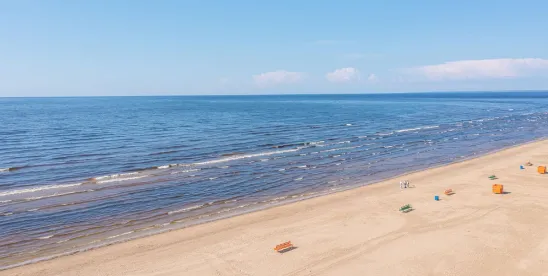As climate variability and drought continue to challenge California’s water supply, the state is renewing its focus on seawater desalination as part of a diversified water portfolio. While only a handful of large-scale desalination facilities have been approved along the California coast — including the Carlsbad, Dana Point, and Marina plants — desalinated water remains a small but potentially expandable component of the state’s water strategy. Over the past year, the Department of Water Resources (DWR) and State Water Resources Control Board (Water Board) have taken significant steps to evaluate and update the regulatory and planning frameworks that govern these projects.
In April 2024, the Department of Water Resources (DWR) released the 2023 California Water Plan Update (Water Plan), a key planning document that informs water resource decisions for water districts, cities, and counties across the state. The Water Plan identified a goal to increase desalinated product water by 28,000 acre–feet per year by 2030 and 84,000 acre–feet per year by 2040. It also included Desalination Resource Management Strategies (Desalination RMS), which assess the current landscape of desalination projects in California and identify both challenges and opportunities for future development.
The Desalination RMS outlines a series of policy recommendations aimed at integrating desalinated water into the state’s water supply portfolio. One notable recommendation calls for identifying potential updates to the Water Board’s California Ocean Plan (Ocean Plan) to address the permitting and operation of offshore desalination facilities. DWR also emphasized the need for increased stakeholder engagement and streamlined permitting processes to support responsible expansion of desalination.
In alignment with these recommendations, the Water Board held a public scoping meeting on October 28, 2024 to explore potential amendments to the Ocean Plan’s seawater desalination provisions. The Ocean Plan sets statewide standards to protect water quality and beneficial uses of the ocean along the California coastline and implements Water Code § 13142.5(b), which requires new or expanded coastal industrial facilities using seawater to use “the best available site, design, technology, and mitigation measures feasible shall be used to minimize the intake and mortality of all forms of marine life.”
At the October meeting, the Water Board presented 11 broad topics under consideration for revision. Some of its key proposals include the following:
- Enhanced Stakeholder Engagement and Interagency Coordination: Future projects could be subject to requirements to engage with broader community interests, including Tribal communities and environmental justice groups. The permitting process, however, could be streamlined to require concurrent agency review of necessary approvals to improve overall efficiency.
- Clarification on Subsurface Intake Requirements: While subsurface intakes are the preferred method for minimizing marine life intake, the Water Board currently allows exceptions when it is shown that subsurface intake is not feasible. The Water Board is considering amendments that would clarify when exceptions are permitted and what constitutes a valid feasibility analysis.
- Protection of Coastal Freshwater Aquifers: The current Ocean Plan lacks guidance on assessing impacts to nearby freshwater aquifers from subsurface intake systems. Proposed revisions could include new instructions on the appropriate siting and design of subsurface intakes, as well as recommended management practices to protect those freshwater resources.
- Volumetric Annual Reporting: There is no requirement to report the volume of desalinated seawater produced to the Water Board. While the state tracks volumes of desalinated brackish groundwater and brackish surface water, it does not have similar data for desalinated seawater. The proposed amendment to the Ocean Plan would establish an annual reporting requirement for seawater desalination facilities. This reporting would support a more comprehensive understanding of the state’s water supply portfolio, enable assessment of desalinated seawater efficiency, and advance DWR’s objectives for increased desalinated product water by 2030 and 2040.
- Timing and Completion of Mitigation Measures: Under existing rules, facilities must submit a Marine Life Mortality Report and fully mitigate impacts from construction and operation of desalination facilities on marine life — but the timeline for doing so is unclear. The Water Board is proposing to clarify when such reports and mitigation measures must be completed to prevent facilities from beginning operations before risks are adequately assessed.
Although most of the proposed changes would apply to future projects, certain revisions — such as those clarifying mitigation timelines — could affect existing facilities. The Water Board is currently reviewing the comments it received during the public comment period, which closed on November 13, 2024. Although no additional meetings have been announced, further stakeholder engagement is expected as the Board refines its proposals. These ongoing efforts reflect a broader statewide push to balance the potential benefits of desalinated water with California’s environmental protection goals and regulatory clarity for project proponents.




 />i
/>i
